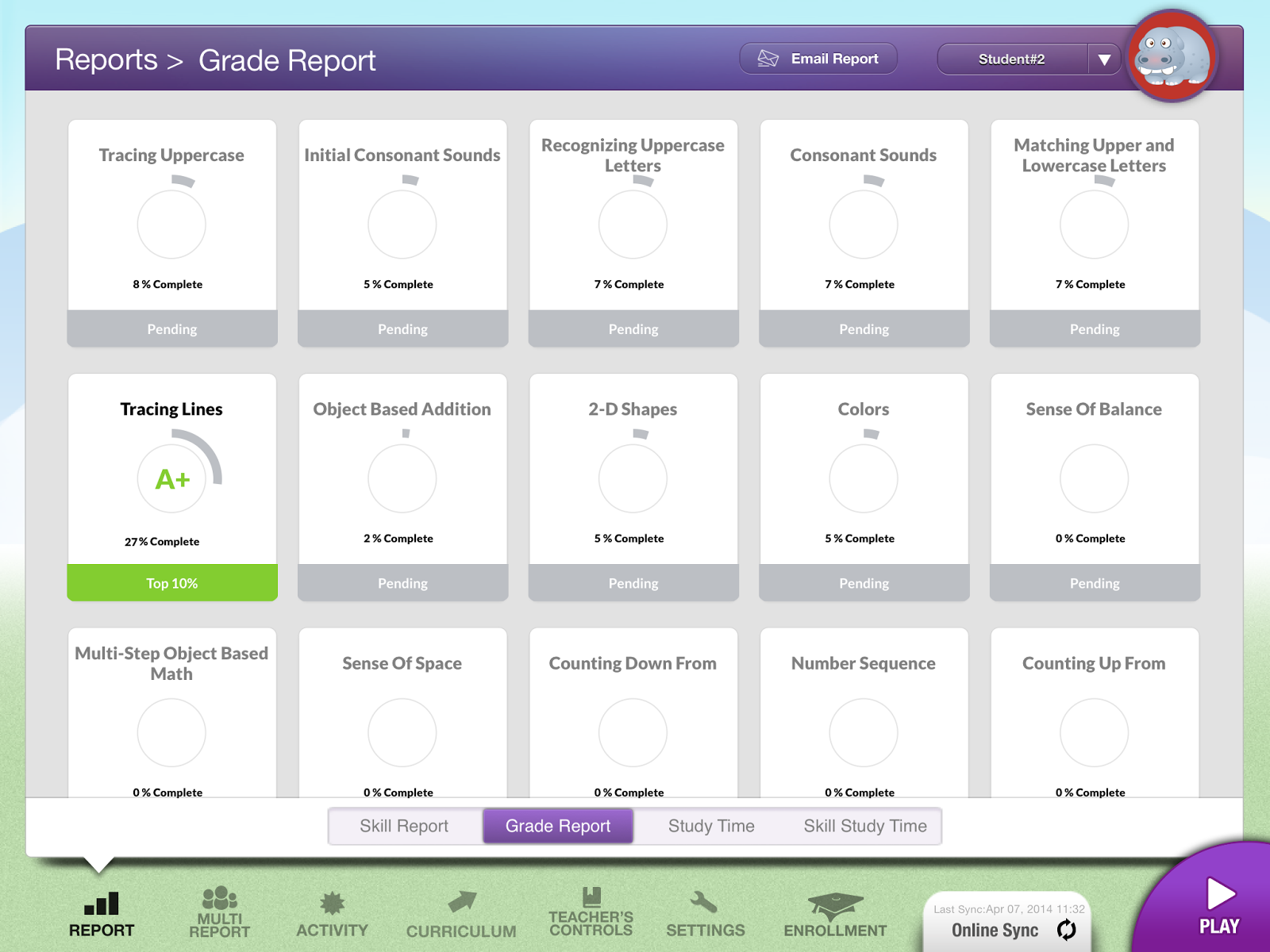This student had experience with Kindle games, but it was her first time playing with an iPad. Of all the students, she was the most focused and thought to look for alternatives when she came across games she disliked. Luckily, the games she disliked were the ones that were too easy, it was the difficult ones that she enjoyed the most.
Student #2: Age 2, Boy
This student was incredibly excited to play the educational games (you can see his grin below). He was much slower than Student #1, probably because of the age difference, but was quick to catch on to the requests of the application. It was difficult to get him off the application.
His Grade Report is below: he received an A+ in Tracing lines. In other areas he did not go far enough to get a complete grade in other areas, but he showed improvement in activities that showed 2-D shapes and tracing uppercase letters specifically during his time.
Student #3: Age 4, boy
He had not had previous experience with using tablets of any sort, so he seemed a little confused at first, but caught on quickly. Further into our interaction, he began to say things like: "my mom used to play this game when she was a baby" or "my mom taught me how to play this." I took this as a sign that he was feeling more comfortable with the application, and he also seemed insecure when he couldn't figure out how to play some of the games. I told him that "the game knows you're super smart, so it's trying to trick you" which made him want to work harder on it, and instead of getting frustrated he's say: "It's tricky, but I'm smarter than it."
His Grade Report is below: He received an A+ in both Multi -Step Object Based Math and Tracing Lines. I also observed improvement in Consonant Sounds and Colors.
Student #4: Age 1, Girl
This student is developmentally ahead, so her teacher believed she would do well with this activity. Most things put her in a stupor to begin with, but she slowly got good with matching (shown below). On activities she did not do well in, she instead found other features on the screen, such as tickling the character Icky who appears in the bottom right hand corner of the screen, as well as poking a whale in another game. She would often laugh and clap her hands when the games made sounds. She eventually did well in most of the math activities as well.
Her Grade Report is below: She received an A+ in Multi -Step Object Based Math, but other areas were much more difficult for her.









.png)

.png)

